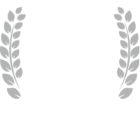Annual ISHLT Registry Reports:
The ISHLT registry has links to slide sets that summarize overall adult lung transplant statistics as well as the annual Focus Theme topics. The slides list the citation for the Focus Theme articles that are published annually in the Journal of Heart and Lung Transplantation. The Focus Theme for 2022 is COPD.
ISHLT Registry Slides
Recipient Selection:
Leard LE, Holm AM, Valapour M, et al. Consensus document for the selection of lung transplant candidates: An update from the International Society for Heart and Lung Transplantation. J Heart Lung Transplant. 2021; 40:1349-1379. Provides updated disease-specific summaries of indications and contraindications for transplantation, as well as recommendations for timing of referral.
PMID: 34419372
Free Full Text
Donor Selection and Management:
Courtwright A, Cantu E. Evaluation and Management of the Potential Lung Donor. Clin Chest Med. 2017 Dec;38(4):751-759. Provides a review on the selection, assessment, and management of potential donor organs.
Post Transplant Management:
Adegunsoye A, Strek ME, Garrity E, et al. Comprehensive care of the lung transplant patient. Chest. 2017; 152:150-64. This review provides a concise overview of the management of patients awaiting transplant as well as recipients.
PMID: 27729262
Kotecha S, Ivulich S, Snell G. Review: immunosuppression for the lung transplant patient. J Thorac Dis. 2021; 13:6628-6644. A concise overview of the induction, intra-operative, and post-operative immunosuppression regimens for lung transplant recipients.
PMID: 34992841
Free Full Text
GM Verleden, AR Glanville, ED Lease, et al. Chronic lung allograft dysfunction: definition, diagnostic criteria and approaches to treatment. A consensus report from the Pulmonary Council of the ISHLT. J Heart Lung Transplant. 2019; 38:493-503. This document provides the most updated definition, staging, diagnosis, and treatment of CLAD, including a summary of the primary phenotypes, bronchiolitis obliterans syndrome and restrictive allograft dysfunction.
PMID: 30962148
Glanville AR, Verleden GM, Todd JL, et al. Chronic lung allograft dysfunction: Definition and update of restrictive allograft syndrome-A consensus report from the Pulmonary Council of the ISHLT. J Heart Lung Transplant. 2019; 38:483-92. This document provides a consensus definition of restrictive allograft syndrome and discusses the underlying pathology, pathophysiology, diagnosis, and treatment.
PMID: 31027539
Levy L, Huszti E, Tikkanen J, et al. The impact of first untreated subclinical minimal acute rejection on risks of chronic lung allograft dysfunction or death after lung transplantation. Am J Transplant. 2020; 20:241-249. This large, retrospective, single-center, cohort study from Toronto is noteworthy for providing evidence that low-grade acute rejection may not require treatment. Untreated stable A1 rejection (no clinical/PFT changes) was not associated with an increased risk of death or CLAD compared to patients without acute rejection.
PMID: 31397939
Free Full Text
Tikkanen JM, Singer LG, Kim SJ, et al. De novo DQ donor-specific antibodies are associated with chronic lung allograft dysfunction after lung transplantation. Am J Respir Crit Care Med. 2016;194:596-606. A single-center cohort of 340 lung transplant recipients who underwent HLA-antibody testing quarterly pretransplant and at regular intervals over the first 24 months after transplant. The cumulative incidence of de novo DSA was 47% at a median of 86 days after lung transplantation with 76% of recipients with DQ-DSA. Developing de novo DSA was associated with a twofold increased risk of CLAD (hazard ratio, 2.04; 95% confidence interval, 1.13-3.69). This association appears to be driven by the development of DQ-dnDSA.
PMID: 26967790
Mahajan AK, Folch E, Khandhar SJ, et al. The diagnosis and management of airway complications following lung transplantation. Chest 2017; 152:627-38. This article reviews the risk factors, clinical manifestations, and treatments of airway complications following lung transplantation.
PMID: 28274791
Hathorn KE, Chan WW, Lo WK. Role of gastroesophageal reflux disease in lung transplantation. World J Transplant. 2017; 7:103-16. GERD is associated with worse outcomes following transplant. This paper reviews the pathophysiology, evaluation, and management of GERD in this population.
PMID: 28507913
Free Full Text



